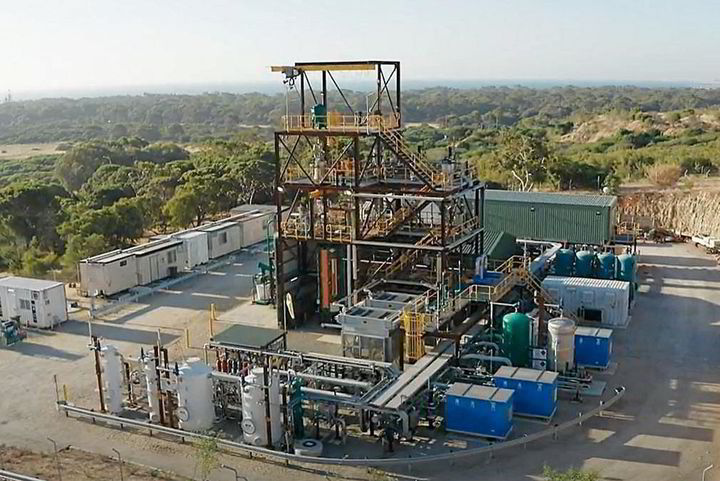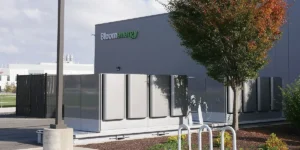Australia’s first commercial turquoise hydrogen demonstration plant starts up

An Australian company with a proprietary process that produces “turquoise hydrogen” and solid carbon from methane — with no CO2 emissions — has finally started up its first commercial demonstration plant more than 13 years after the business was first launched.
Hazer Group’s plant near Perth, Western Australia — the first sizeable turquoise H2 facility in Australia — will produce about 100 tonnes of hydrogen a year from biomethane, along with 380 tonnes of synthetic graphite (a form of solid carbon).
The use of biomethane ensures that the plant can be carbon-negative (if no fossil fuels are used to produce energy), essentially taking CO2 extracted from the air by plant matter and turning it into solid carbon.
A final investment decision in the project, which was part-funded by A$9.41m ($6.14m) from the Australian Renewable Energy Agency, was taken back in July 2020.
Queensland-based Turquoise Group is also planning to start up its own commercial turquoise-hydrogen demonstration plant in the first quarter of this year, using plasma-torch technology.
The Hazer process works by heating methane to about 900°C inside a fluidised bed reactor in the presence of sand-like particles of iron ore, but no air (which prevents the formation of CO2). This high-temperature heat turns the iron ore into nanoparticles, and the methane decomposes into hydrogen and graphite, the latter of which forms on the surface of the nanoparticles.
Article continues below the advert
The resulting powder is 80-95% graphite, an ingredient used in the manufacturing of lithium-ion batteries, and thus can be sold for profit.
Back in 2017, Hazer’s then CEO Geoff Pocock told Hydrogen Insight’s sister publication Recharge that the resulting turquoise hydrogen would be cheaper than both green and grey varieties as the profits from the sale of graphite would effectively reduce the cost of the H2.
The Perth-based company has signed a non-binding memorandum of understanding with Japanese companies Chubu Electric and Chiyoda to jointly plan a turquoise hydrogen plant in the Chubu region of central Japan using the Hazer process, which would produce 50,000-100,000 tonnes per year.
It is also working with Canadian utility FortisBC on a potential plant in Vancouver that would produce up to 2,500 tonnes of turquoise hydrogen a year.
Hazer’s business model is to license its technology and receive royalty revenues in order to avoid large-scale capital-expenditure exposure.
Despite not having received any income from its operations, the company — which trades on Australia’s ASX stock exchange — has a market capitalisation of A$136.74m ($89.25m).
The world leader in turquoise hydrogen — generally defined as being produced from methane without CO2 emissions — is US-based Monolith, which has a 5,000-tonne-per-annum (tpa) plant in Nebraska that will be expanded to 50,000 tpa with the help of a $1.04bn loan guarantee from the US government.
Speaking about the commercial demonstration plant (CDP), Hazer CEO Glenn Corrie said: “This is a landmark achievement for Hazer, as we realise the successful start-up of our CDP and the production of low-cost, low-emissions hydrogen and graphitic carbon utilising our world-first pyrolysis technology.
“As the team strive towards extended continuous operation of the plant in 2024 we are excited to build on this momentum for the next scale-up of the technology with our global partners in key markets, including North America, Europe and Asia.
“This is an important juncture for Hazer commercialisation strategy. Our pipeline of opportunities is growing and with our CDP proving our technology can operate at commercial scale, I’m confident that 2024 will open-up further demand for our disruptive technology that can provide clean hydrogen to accelerate global decarbonisation.”
Note: This article was updated on 2 February to state that the new plant will use biomethane, which had not been mentioned by Hazer in its original press release.





